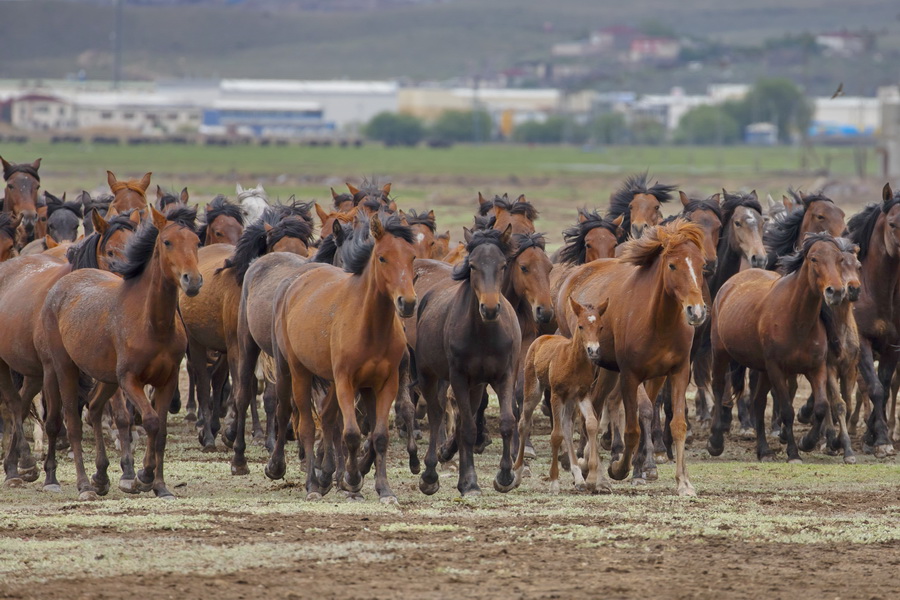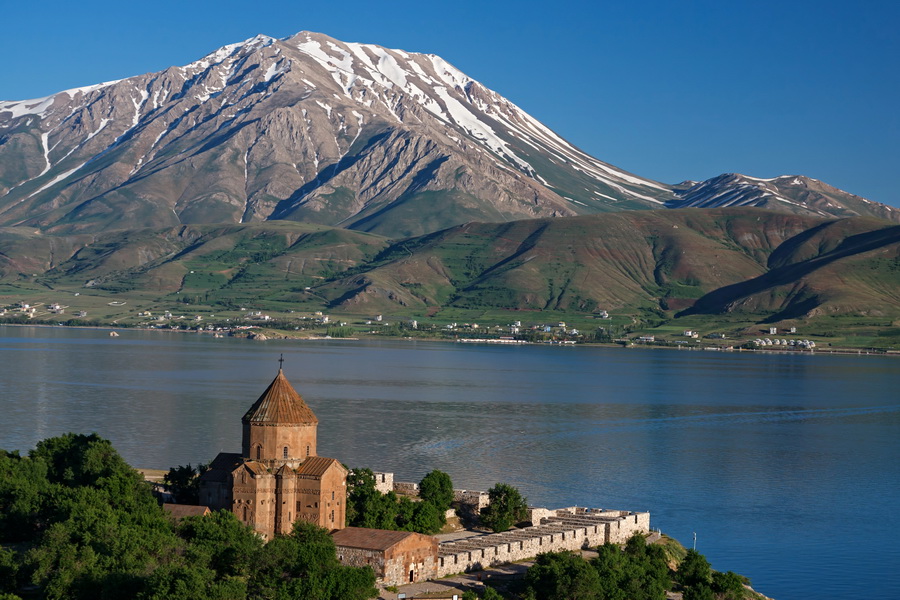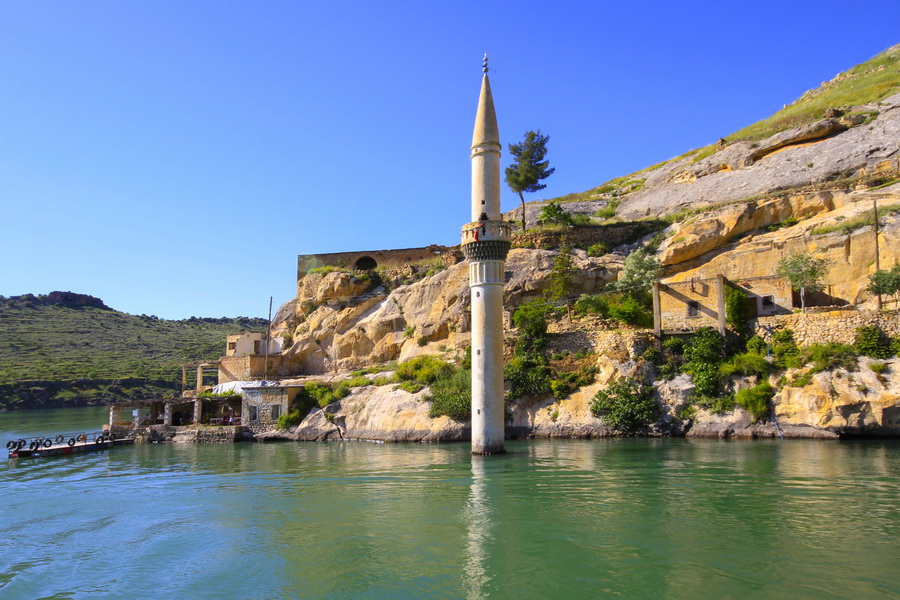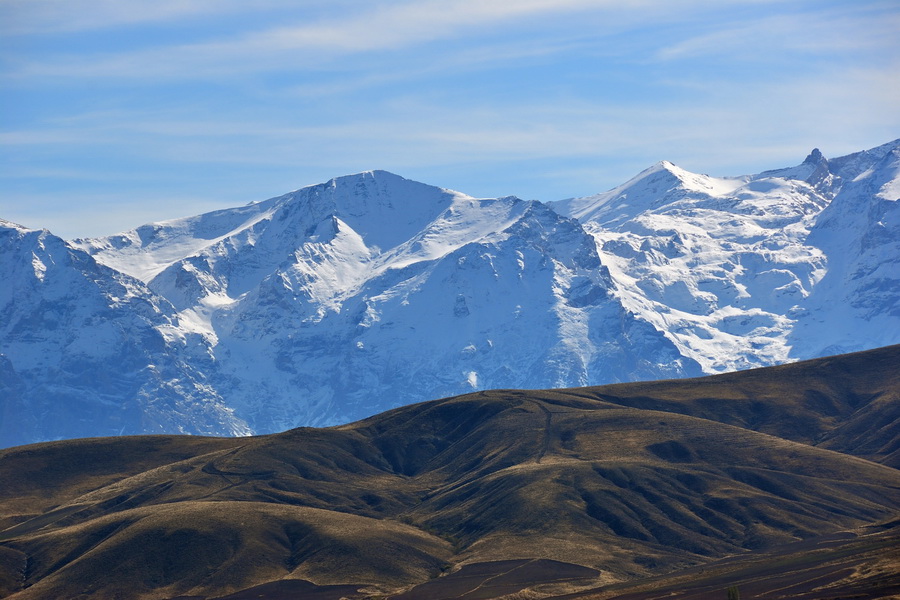Where Is Turkey Located?
With about 87 million people, the Republic of Turkey (Türkiye) stands as the 18th most populated country in the world. Right between the Black and the Mediterranean Seas, it has always served as a bridge connecting Europe and Asia from the Balkans to the Caucasus. So much so, that some major stops on the ancient Silk Road trade routes included a few stops here, bringing innovation and new technologies to the region.
Turkey shares land borders of various lengths with eight different countries: Syria – 822 km, Iran – 499 km, Iraq – 352 km, Armenia – 268 km, Georgia – 252 km, Bulgaria – 240 km, Greece – 206 km, and Azerbaijan – 9 km, making it a major central geographical crossroads between continents. Most of the country is situated on the Anatolian Peninsula (Asia Minor), with a total area of 783.562 km2 (302.535 sq. mi) and only 3% of the area constituting the Thrace region, which is located in Europe. The rest of it is in Asia.
The land area of the Republic of Turkey represents 98% of the territory, and 2% of its total territory consists of water. Additionally, the coastline of the country has a total length of 7,200 km (4,500 mi).
Unique Biodiversity of Turkey

Turkey’s diverse climate creates ideal conditions for a wide variety of flora and fauna. The fragmented landscape comprising the rugged highlands of Anatolia and the plateaus, as well as the four different seas, contributed to the development of varied specimens. The large size of the country and its mountainous terrain made it possible to isolate certain regions and establish an assortment of species. The Soils and natural resources of Turkey are also rich and play a significant role in supporting its tourism industry.
Turkey has long been a haven for birdlife and a refuge for countless species, earning its place as a true botanical wonderland! The country has a rich and diverse biodiversity and wildlife due to its varied climate, geography, and ecosystems. Endangered species of flora and fauna in Turkey are actively protected through various conservation programs, supported by a network of national parks and reserves dedicated to preserving their natural habitats.
Geographical Features and Land Relief of Turkey

The physical topography of the country is predominantly mountainous, with the lowlands prevalent mostly in the coastal regions, particularly in the Aegean and the Mediterranean.
The elevation varies depending on the location. On average, it reaches 1,132 m (3,711 ft) above sea level; however, the minimum elevation is recorded at -415 m (-1361 ft) below sea level, and the highest point in Turkey is Mount Ararat, also named Mount Agri (Ağrı Dağı), at 5.137 m (16.854 ft) above sea level. From the city of Van, located on the shores of Lake Van (Van Gölü), you may depart for a trek to Mount Ararat, Mount Nemrut Caldera (Nemrut Kalderasının), and Mount Süphan (Süphan Dağı). The nature of Turkey is therefore rich and varied.
From serene wetlands, powerful rivers and cascading waterfalls to mysterious forests, century-old natural monuments and vast caves and caverns – Turkey has some of the best wonders to offer. Broaden your horizons beyond the more typical natural wonders and take a glance at the country’s only desert, bays and islands near the sunny coastline, underground lakes, volcanoes, canyons and a myriad of peaks for your next adventure. Whether you are a novice or an experienced explorer, exciting opportunities can be created by touring in the steppes, hiking in the natural reserves, or paragliding with a beautiful view of the coast.
Four Relief Zones

The Northern Folded Zone consists of a series of mountain ridges that increase in elevation towards the east. This section occupies the immediate south of the Black Sea. Another, more common name for this system is known as the Pontic Mountains. There, tourists can stay in one of the many ski resorts, such as Sarıkamış Ski Resort, close to the Ancient Silk Road, which is renowned for its powder crystal snow. The fractured parts of the range in the west are exactly what form the Turkish straits. Thrace is the part of the country where most of the lowlands are concentrated. They’re also prevalent in the south of the Sea of Marmara.
The Southern Folded Zone contains mountains that occupy the southern third of Turkey, from the Aegean region to the Gulf of Alexandretta or İskenderun Körfezi. There are two major embayments here – the Antalya Plain that stretches to Alanya and the Adana Plain. The tourist towns of Tarsus and Mersin are connected by train to the city of Adana. The Taurus Mountain range is the biggest feature of this zone. It runs parallel to the Mediterranean coast and along the southern border of the country. The eastern third of Turkey is largely mountainous. However, there are still pockets of valleys and enclosed basins here.

The Central Massif is situated in the western part of the country, between the Pontic and the Taurus Mountain ranges. Its landscape is elevated, and this Central Anatolian Region is often mentioned as the Anatolian Plateau. Despite its name, the topography of this place is more varied than it may seem at first glance. There are at least four distinguishable zones within the massif. The most distinctive one is near the Taurus Mountains, a plateau that has a large area of flat land and gentle elevation. Niǧde, Nevşehir, and Kayseri are located in Cappadocia, where you can hike in valleys and experience a hot-air balloon flight.
The Arabian Plate is a stable massif near the Syrian border encompassing cities like Mardin and Gaziantep that is characterised by its vast plateaus. It is worth noting that the Arabian tectonic plate is active in terms of seismic activity, therefore affecting this part of Turkey at times.
For nature lovers, every season is the best time to visit Turkey. Wherever you are – on the banks of the Bosphorus, on top of Mount Artos (Artos Dağı or Çadır Dağı), hiking the Lycian Way from Kaş, visiting the springs of Şanlıurfa, or birdwatching at the Aras River Bird Sanctuary in Iğdır – there is always a place for you to reconnect with nature and things to do in Turkey. Tailor-made tours can be crafted according to your preferences.
Climate Zones In Turkey

The sun-kissed coastlines to the snow-white mountain tops of Turkey invite tourists to make unforgettable memories regardless of their interests. Due to the varied landscape and elevation, as well as the neighbouring seas, Turkey is in a unique position, offering visitors a climate suited for travelling in all seasons.
Thanks to its peculiar geography, the climate of the Republic of Turkey is quite diverse. In the South, especially along the Mediterranean coast, temperatures often reach +35°C (95°F) in the summer. However, winter lows in the East can drop below -30°C (-22°F), making it one of the coldest regions in Turkey, though not the coldest in Asia. Along the coastline, especially in the North and the West, the climate is milder, with year-round rainfall, dry summers, and mild winters. The Anatolian plateau is more continental, sunny and dry in summer, cold and snowy in winter. High mountain areas are known for lower temperatures, with occasional glaciers to be found.


